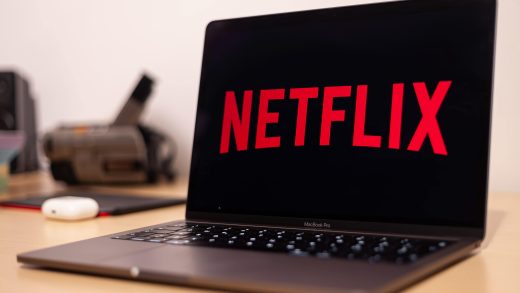White saviors have been called out for decades, but in 2012 the descriptor sprinted around Twitter, Facebook, Tumblr, and the media after Nigerian-American writer Teju Cole wrote a series of tweets that struck a nerve. Cole had just seen what was the most viral online video of the time, Kony 2012.
The short documentary introduced audiences to Jacob Acaye, a Ugandan boy who was abducted alongside his brother by the Lord’s Resistance Army. Acaye saw the army kill his brother violently. The Kony 2012 website crashed briefly as the video racked up over 100 million views within days. Kony 2012 pulled at viewer’s heartstrings and its white creator, filmmaker Jason Russell, attempted to bring the world together to arrest the Army’s leader and Ugandan warlord Joseph Kony.
But Cole argued on Twitter that Russell’s work was yet another example of what he called the “white savior industrial complex.” Americans could be disturbed by Acaye’s story and yet turn a blind eye to harmful policies and corrupt systems. White saviors are more interested in their own emotional validation than helping others, Cole tweeted.
Tweet may have been deleted
Commentary on white saviors continues to ebb and flow out of internet consciousness. Google search interest for “white savior” jumped again in June 2020 amid the backlash to hashtag activism as Black Lives Matter protests picked up around the world. While it’s taken a backseat more recently, it’s still important to understand the concept as we continue to combat systemic racism. How we dismantle those barriers matters; even if one may have acted like a white savior in the past, there’s room to grow.
Here’s how to avoid practicing white saviorism.
What is a white savior?
White saviors perpetuate the idea that “good” white folks have the authority and duty to swoop in and “save” the world, especially Black people, from oppression rather than following the lead of Black people, Dr. Melina Abdullah, co-founder of Black Lives Matter Los Angeles, a local chapter of the larger organization, wrote in an email.
Abdullah, who teaches pan-African studies at California State University and has a Ph.D. in political science, says “good” white folks are people who posture themselves as allies and may or may not be deeply entrenched in anti-racist work. These aren’t the white people who shout racial slurs or defend “All Lives Matter” on social media. Rather, Abdullah says, they’re the “not apparently racist white folks,” such as those who firmly believe they’re not racist because “their best friend is Black.”
People who practice white saviorism often engage individually, rather than collectively, she believes. They usually think of themselves as experts and are not part of organizations that help them check their privilege, says Abdullah.
Russell had released Kony 2012 with a nonprofit he cofounded, but no longer runs, called Invisible Children. Mashable was unsuccessful in reaching Russell for comment through a listed number and a Facebook page connected to his children’s book.
“They’re often thrill-seekers who escalate things in ways that can be dangerous for Black people especially,”
Abdullah’s seen how white saviors can actually cause physical harm to those they’re intending to protect. “They’re often thrill-seekers who escalate things in ways that can be dangerous for Black people especially,” she says.
Abdullah’s encountered these kinds of people throughout her life as an organizer. She was at an event earlier this year where white people showed up in all black clothing to attempt to protect Abdullah and others from police. Instead, she believes their presence attracted the police.
“Some of our folks were kettled in and our children were terrified. Thankfully, we all made it out, but we had to shut down our event early and amid unnecessary drama,” says Abdullah, describing the scene when police surrounded the crowd and prevented people from leaving.
Abdullah believes white saviorism feeds into a desire to be in control.
“I think they [white saviors] don’t always recognize that it is an exertion of power when you seek to swoop in and ‘free’ someone else, it’s a diminishment of who I am as Black person,” says Abdullah. “It assumes that we don’t have our own solutions, our own plans, to disrupt white supremacy because white folks have lived in a world where they are really centered in the universe. They think that every solution should be with them at the front of it.”
A former white savior
Kelsey Nielsen, who as part of the No White Saviors campaign raises awareness of white saviorism on social media, used to be a white savior. Nielsen, the daughter of conservative evangelists, traveled to Jinja, Uganda in 2010 where she later started an organization to keep children out of orphanages.
Nielsen describes this work and her motivation to come to Uganda as being trapped in her “whole white savior mode.” It was also a self-serving mission as she was trying to find herself and her purpose.
“I went on a real white savior trip when I first came to Uganda… [where I] volunteered at an orphanage for two or three months and learned later that was actually really harmful,” she says. “Kids in institutional care and in orphanages are already struggling to form healthy bonds and healthy attachments and so people coming in and out is harmful.”
Nielsen began to realize the detrimental side of her philanthropy and, as part of this process, observed the difference between how she and other white people were treated versus Ugandans.
“People who were already doing so much for their community and knew best what the community needed were having a much harder time getting funding,” says Nielsen. White people “would steamroll our way in and just do whatever we felt was best because that’s the virtue and nature of whiteness and white saviorism.”
Now, seven years later, the No White Saviors team (made up of Nielsen and Ugandans Olivia Alaso, Wendy Lubega, and Sharon Nyanjura) refers to Nielsen as the “white savior in recovery.” Nielsen’s main job is to hold herself and other white people accountable.
One powerful way No White Saviors does that is through its popular Instagram account, which offers lessons on white saviorism and has over 930,000 followers. The women also have a podcast, which has explored white saviorism in Peace Corps, missionary work, and transracial adoption.
While No White Saviors has been accused of “hating white people,” by people who’ve encountered their work via social media, that’s not the goal. Rather, the organization wants to educate people on white saviorism and how to do better. For example, via an Instagram post, No White Saviors asked what white people who travel to the Global South to “discover themselves” are trying to examine. Its guess? That person’s privilege.
“Contrasting one’s experience or situation to your own isn’t to discover or be more appreciative of what you possess but rather be self-reminded of the privilege you hold,” the post’s caption reads. “To discover oneself in the Global south through an analysis of these individuals and their situations in comparison to thyself shows the self-centeredness in whiteness and the adoration of the white gaze.”
Are all white saviors white?
The short answer is, it depends who you ask.
Abdullah believes Black and brown people can advance white saviorism but, because they’re not white, they can’t actually be white saviors. No White Saviors has another take.
“White saviorism isn’t solely tied to skin color,” says Rwothomio Gabriel Kabandole, who runs No White Saviors’ social media and is both Ugandan and Congolese.
Many of us absorb the ideologies of whiteness and that includes Black and brown people, says Kabandole. For example, one might think it’s OK to take photos of Black and brown people, especially children, without their permission. Or one may buy into colorism, which happens when Black or brown people discriminate against people with darker skin tones. As such, one can unintentionally adopt the false notion that they need to come to the aid of Black and brown people, even if they’re also a person of color.
No White Saviors has questioned the efficacy of the Peace Corps, which sends American volunteers to mostly Black and brown countries to engage in development projects in areas like education and health. While most Peace Corps volunteers are white, not all are (I’m a former Peace Corps volunteer of color). In March 2020, when the COVID-19 pandemic took hold, the Peace Corps evacuated all its volunteers in over 60 countries. As a response, No White Saviors’ questioned if Peace Corps volunteers are really needed on its Instagram account.
“Remember when Peace Corps evacuated all their volunteers because of a global pandemic? And all the communities survived? How necessary is your program for the host countries if everyone can pack up and leave and nothing changes?”
For its part, the Peace Corps is working to return to host countries. “At the invitation of host governments, the Peace Corps works alongside local leaders on community-driven projects around the world. All of our host country partners have asked for the Peace Corps to return to service once conditions permit, and we are eager to do so,” the organization said in a statement. “Due to the COVID-19 pandemic, we have all faced many months of isolation from each other and the world around us. Our way forward is together. The Peace Corps stands ready to reengage with our partners, promoting world peace and friendship, as we find our way through and beyond the pandemic.”
How to break out of white saviorism
If one wants to bypass white saviorism or suspect they’re already a white savior, Kabandole suggests they ask themselves the following:
-
Am I really needed?
-
What’s my motivation for going? Is it because I need to feel better about myself?
-
Would I want children from my country or my children treated this way?
Before signing up for a volunteer trip, say to go build wells in South America, one should evaluate whether they have the construction skills to do so. If not, it’s probably better to stay home and leave the job to skilled locals. They can also consider donating the money they would’ve spent on airfare and meals in the host country to the project instead, suggests No White Saviors.
How to recognize if you’re being racially gaslighted
Oftentimes, says Kabandole, people with a white savior mentality have a self-serving mindset. Maybe they’ve always dreamed of living abroad or want to know what it’s like to live in a developing country. If the main reason someone wants to do the Peace Corps or a mission trip is because of what they’ll get out of their time there, it’s better to forego it.
Often, the hallmark white saviorism photo is a selfie in a rural village with nameless brown or Black children huddled around a white person or standing in the background. Children shouldn’t be used as props, no matter where they’re from, Kabandole argues.
“These photos continue the stereotypical dehumanization of Black bodies,” Kabandole says of the selfies.
He also points out these kinds of images aren’t new.
“These kinds of photos can be traced to the days of colonialism, when these explorers would come to the African continent and take dehumanizing photos of people and send them back to their home nations to say we [Africans] are uncivilized or we do not know anything,” says Kabandole.
So before taking that problematic selfie or volunteering in a developing country in a quest for personal discovery, people should examine their intentions. If they find themselves falling into the white saviorism trap, they should pull back and consider what they could do instead to help. Perhaps that’s dismantling white saviorism, or supporting people on the ground already embedded in communities.
Source : How to avoid becoming a white savior










